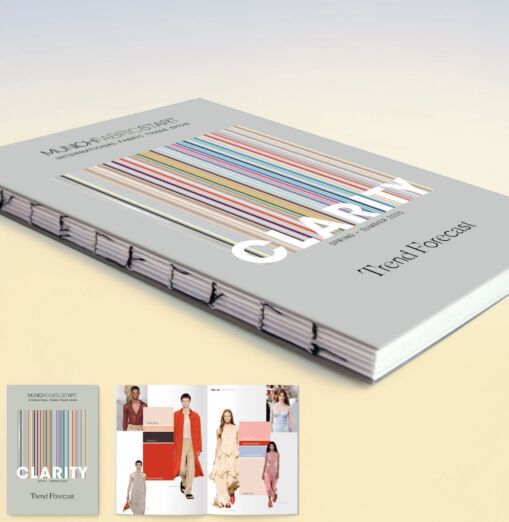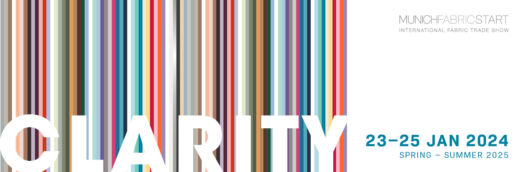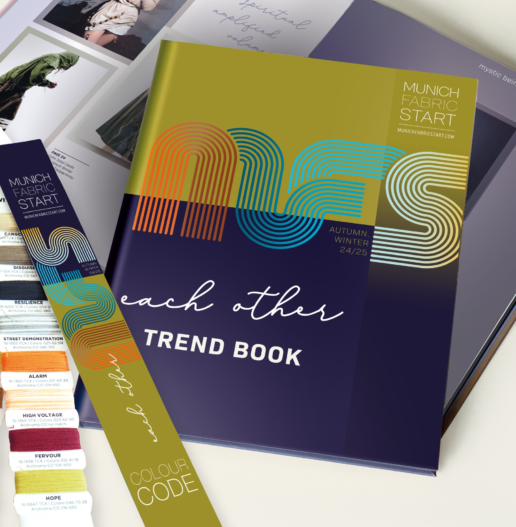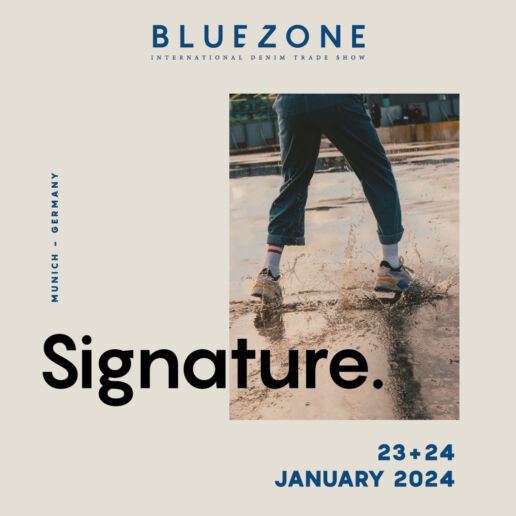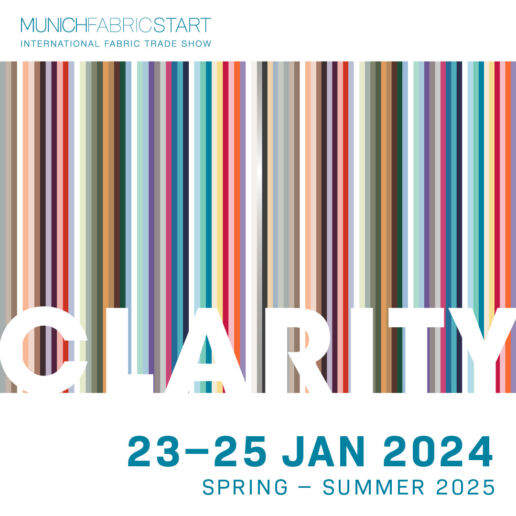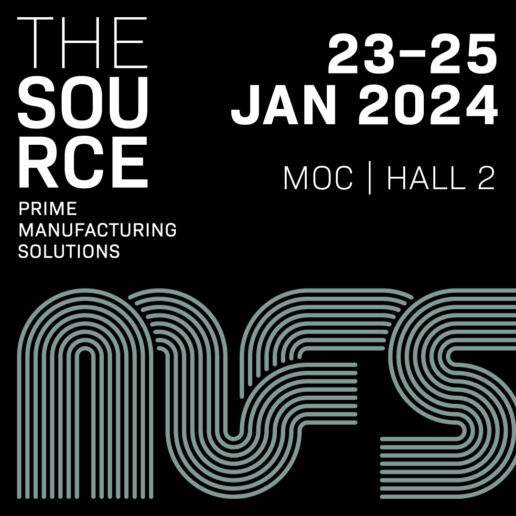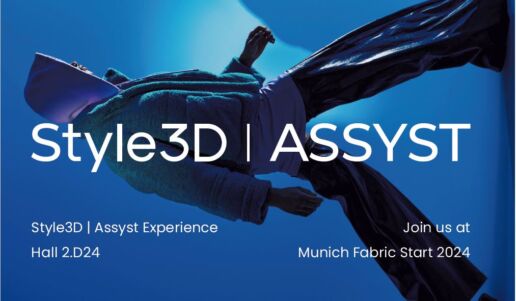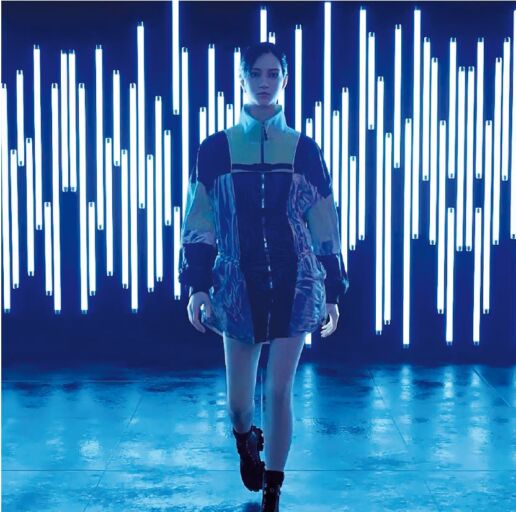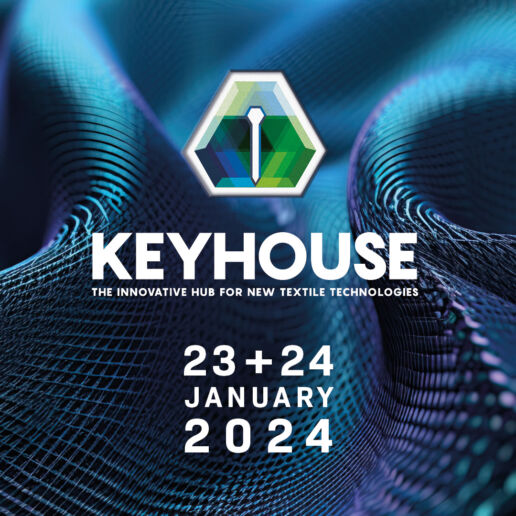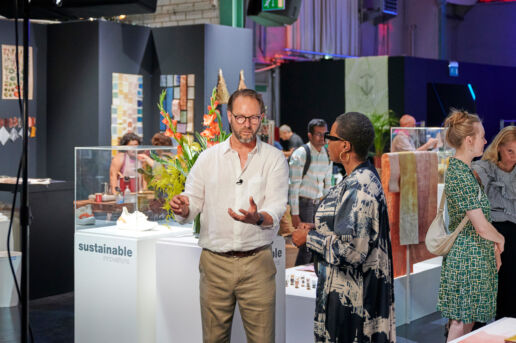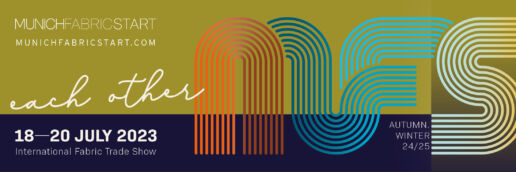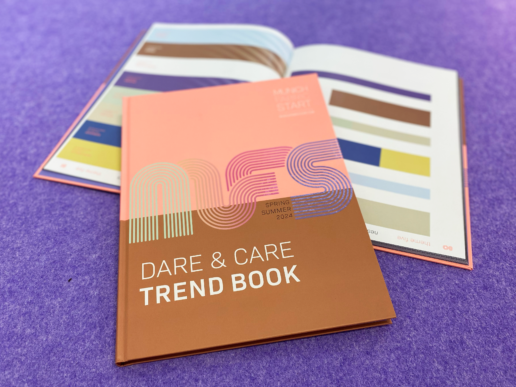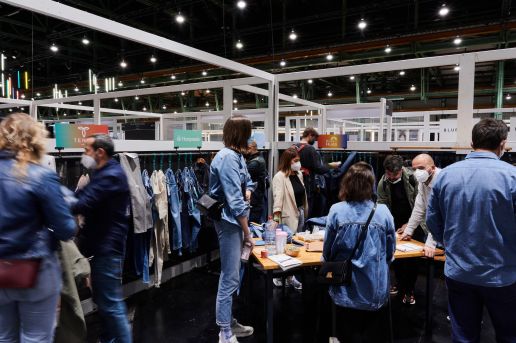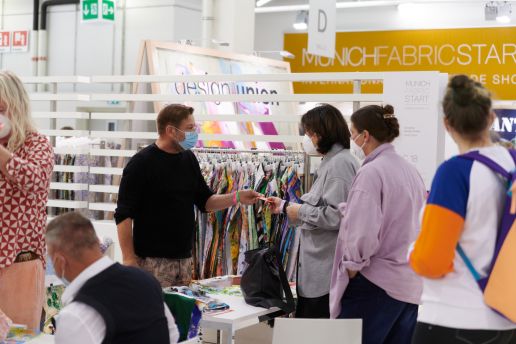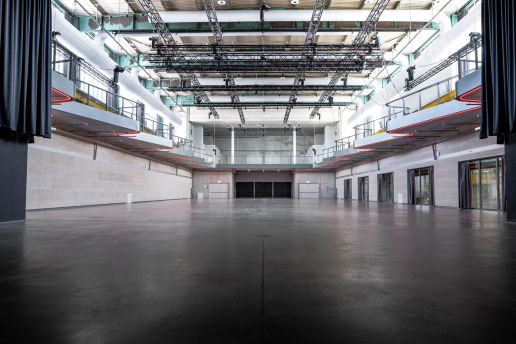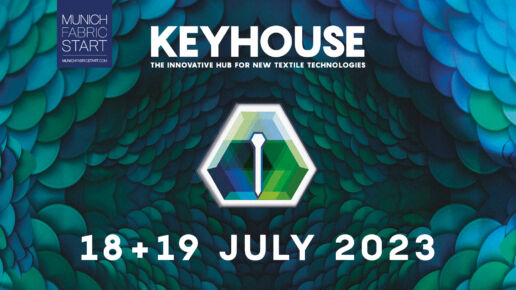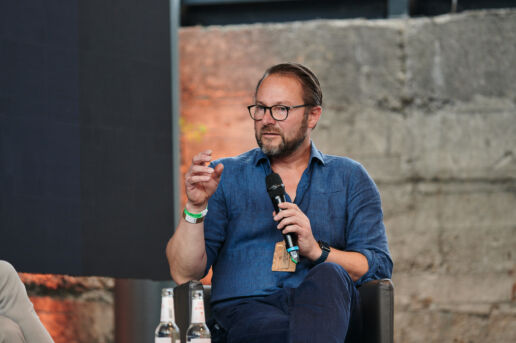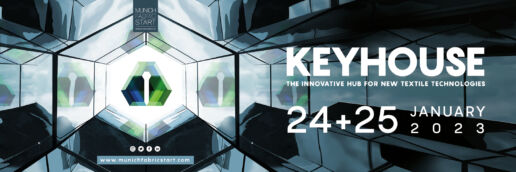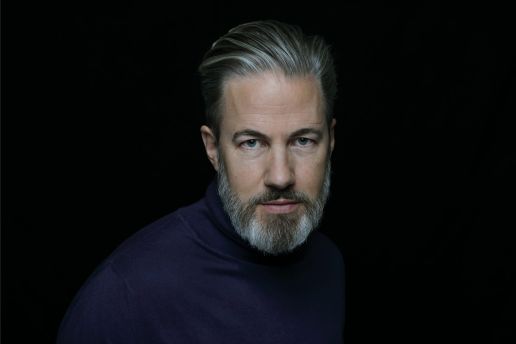Trend Forum
Trend Preview for SPRING.SUMMER 25
The new summer season’s title is Clarity. It describes the longing for clear structures and simplification against the backdrop of our present environment and the growing complexity in many areas. The search for clarity ranges from the call for transparent production and supply chains to structured fashion themes with a meaningful use of colours, silhouettes and materials. Reduction and realism, paired with imagination and creativity, create a new awareness of quality, sustainability and design competence.
The juxtaposition of rediscovered craftsmanship and new technologies, urban and rural spaces, self-questioning and social cohesion, decoration and function reflect the momentary complexity. They are opposites that inspire each other and raise awareness of the need for quality and responsible consumption. Yet, what they all have in common is the desire to face challenges with confidence and creativity. The latter thrives at the interface between new technologies and tradition. Especially where the past and the future form common ground and the familiar mixes with the new.
The five seasonal themes reflect a broad spectrum that ranges from newly interpreted craftsmanship to the rediscovery of one’s own “I”, the synergy between city and country and the fascination for the unknown. The final theme is responsible optimism, a reminder to be active and confident in shaping our future.
CLARITY presents 5 trends for Spring.Summer 25:
SENSUAL MIND
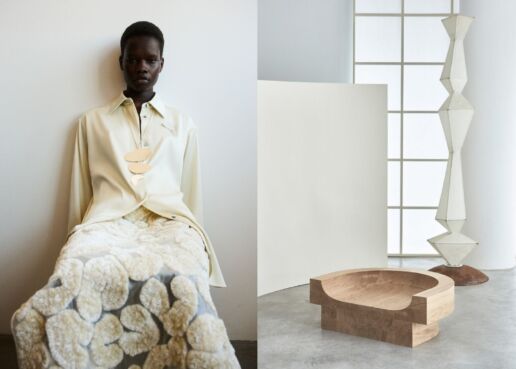
Source:
JIL SANDER, BENNI ALLAN
SENSUAL MIND
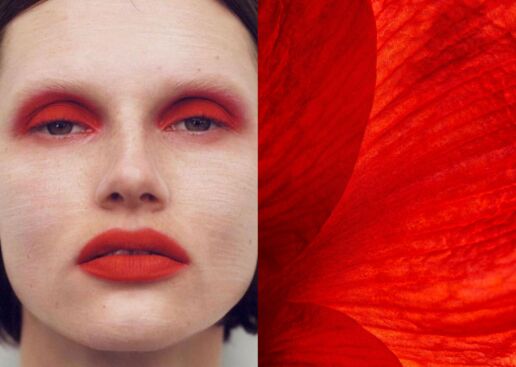
Source:
ZOE GHERTNE, WOLFGANG HASSELMANN
PROVINCITY
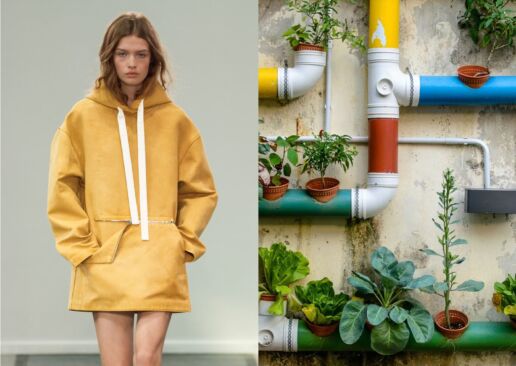
Source:
JW ANDERSON,
JAKOB FISCHER
UNCHARTED
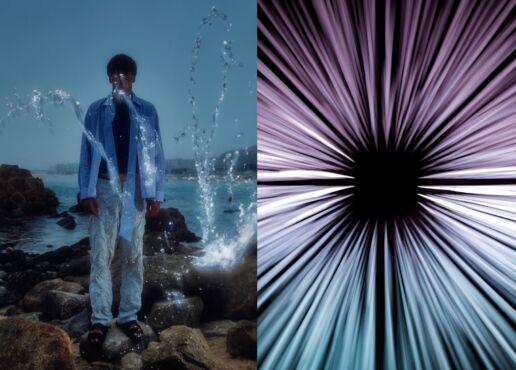
Source:
SZYMON STEPNIAK, CHRISTOPHER BURNS
JOY INSIDE
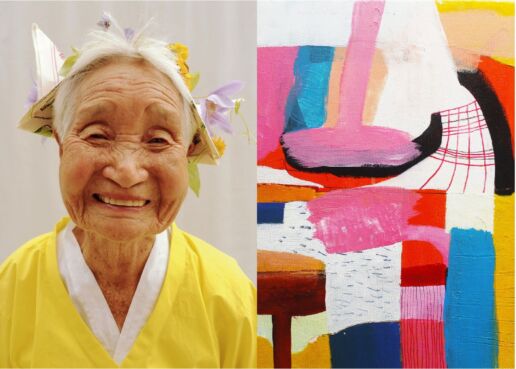
Source:
MIN HYUN-WOO, THE ARTLING
DON'T MISS:
INSPIRATION & INFORMATION FOR YOUR COLLECTION DEVELOPMENT - COLOURS, MOODS, SHAPES & STYLES
These 5 CLARITY trends as well as the 5 denim, street and sportswear trends of BLUEZONE under the leading theme SIGNATURE can be found as a comprehensive trend analysis with detailed colour cards, inspiring materials, moods, prints and styles in our TREND FORECAST – available in the trend forums of Foyer 2, 3 and 4, the trade show office Room B 009 or at the Bluezone check-in counter.
TREND PACKAGE AUTUMN.WINTER 24/25
TREND BOOK & COLOUR CODE
150 EUR
TIMELY TIMELESS
The new minimalism is more than a “palate cleanser” that is intended to give our senses a brief opportunity to recover before the next wave of opulent taste experiences hits them again. It’s sure to linger simply because it is linked to our worldview. In contrast to previous generations, for us “simple” no longer just means “simple and poignant”, but also “sustainable because timeless”.
Two seasons ago, the DMI FASHION DAY at MUNICH FABRIC START was about the question “Should we slow down or speed up?”. We had prepared you for the fact that the desire to slow down fashion would soon reach the mainstream. A recent survey confirms that fashion trends that change too quickly are viewed increasingly critically: three quarters of all women are of the opinion that there are too many and too extreme trends. 65% believe trends are becoming less and less important. And almost 94% pride themselves on saying that they buy regardless of trends.
Longevity is currently very popular. And that doesn’t just mean more solid quality, but also and above all a more timeless design. Fashion is responding to this growing demand for timeless design with increasingly understated design. In this respect, the new minimalism continues the by now century-old tradition of “less is more”, but in a completely new zeitgeist setting. A lot of what is wrongly labelled “Quiet Luxury” actually doesn’t want to look like old money, but rather just be timeless.
Paradoxically, it is currently trendy not to be trendy. People want clothes that look timeless. But then again, paradoxically, timelessness is not timeless either. So we are faced with the challenge of creating a look that is trend-independent in a trendy way and timeless in a contemporary way.
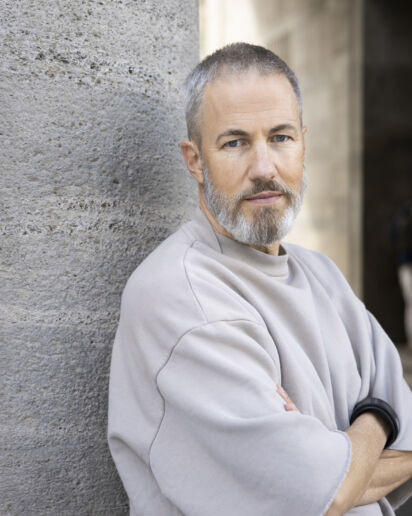
Carl Tillessen
“The debut last season was the best confirmation of our concept of providing trend information with the DMI FASHION DAY exactly when it is needed, namely at the moment when the course for the next season is set with the selection of fabrics. I’m really looking forward to meeting and exchanging ideas with everyone in Munich.”
Carl Tillessen, CEO DMI
INFORM & INSPIRE YOURSELF AT THE MUNICH FABRIC START AT DMI:
You can find out how you can make this work for you in a personal conversation with the DMI analysts. Feel free to contact us anytime.
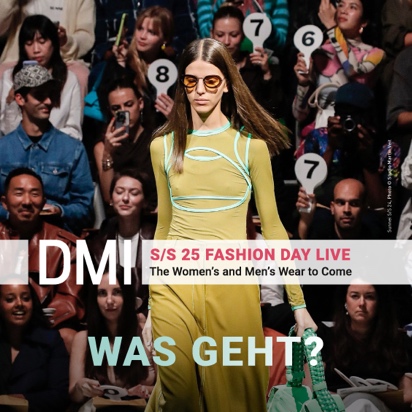
Discover more industry-changing innovations at our upcoming trade fairs:
Digitale Klarheit im Design - ASSYST
Digital processes elevate design to a new level, but only when the result is right and quick. To ensure the flow of ideas and data, Style3D | Assyst passionately develops and confidently explores new paths.
In the 3D simulation, the dress moves as if caught in a breeze. Whether it‘s a skirt or a down coat, the movement looks so realistic that one tends to forget the computer. Everyone in design, technical development, and pattern teams is meant to experience this seamless connection between the digital and the real world. Fabric, human, and pattern are realistically represented, pushing the boundaries of technology. The results are captivating, opening up new possibilities in clothing development and fabric design.
Digital fabrics facilitate collaboration
With both physical and digital fabric versions, manufacturers can provide better guidance. At events or in their own showroom, fabrics are collectively examined. The scanned digital version can be recolored, enlarged, experimented with in designs, and shared with colleagues on-site or later in the company. Once everyone agrees, the fabric is purchased and ideally produced afterward.
3D design and 2D patterns merge
A common scenario: everything looks good digitally until the pattern comes into play. Suddenly, a seam line on the back or inserts on the sleeves are necessary, disrupting the design idea. Numerous approval rounds like these are required in developing a new collection. It‘s much faster when the design interacts directly with the production-ready pattern. The designer doesn‘t need to switch to the CAD system; the pattern stays in the background, automatically updating and reapproving for significant changes.
3D clothing reaches customers
From showroom to eShop or store, it can take weeks … or just days. With the right tools, 3D designs transform into high-quality marketing and sales visualizations. All with the characteristics of the digital product matching the real one, complemented by suitable digital experiences.
Artificial Intelligence begins to create value
When rapid new ideas are needed, inspiration is crucial. AI, like in a brainstorming session, helps generate fresh ideas and refine one‘s concept. Designs can be created quickly, and unsuitable versions can be sorted out promptly. The right design can be replicated and further refined.
Fashion undergoes sustainable change
When design (3D) and production (2D) seamlessly connect, the apparel industry changes significantly. Design, pattern, and technical development can work more easily, sustainably, and cost-effectively, resulting in less fabric and fewer patterns throughout the process. The remarkable aspect is that this revolution requires minimal effort for individuals. Everyone can continue working in their familiar systems, and the integration of systems leads to a closer collaboration with clear results. Each digital design matches the real product, providing extra clarity that is particularly valuable for design teams, thanks to the benefits of digitization.
WE LOOK FORWARD TO WELCOMING YOU IN
→ HALL 2 | D 24 or digitally at www.assyst.de
PROGRAM:
AI for inspiration and promotion
Digital Knitwear Design with KM.On
3D/2D.Connect – Design with product-ready pattern
Digital Fabric for brands and manufacturers
Collaboration – on site, remote or worldwide
OUR PRESENTATIONS IN THE KEYHOUSE:
Design from idea to shelf – the new possibilities for designers
with AI and 3D/2D.Connect from Style3D | Assyst
Global design & production – 3D/2D CAD in the supply chain
[Best Practice]
Discover more industry-changing innovations at our upcoming trade fairs:
Diversity in Dynamics
Marvelling at the levels of sophistication and innovation modern fabrics have attained and continue to breach, it is easy to forget that our relationship with textiles is one of the most intimate and primal ones we have. Granted, today’s creations are (thankfully) far removed from the scratchy cloth our ancestors wore huddled around the fire.
But over the course of time, our relationship with textiles has changed. While we have – technically and commercially – never been closer to textiles, ambitiously engineering fabric compositions to cater to an increased demand of sustainability, for instance, we are ironically also stepping further away emotionally from what was once – literally – closest to us. Today, our engagement with textiles is largely dependent on the prism through which we choose to experience and value it:
We have increasingly come to approach textiles as objects of research and science, questioning what characteristics new fabrics ought to have and how existing textiles can be improved to comply with the ever-changing demands of the market. Impressive examples of such science-led approaches are two projects within the BIOTEXFUTURE-cluster, led by the Institute for Textile Technology (ITA) and the Chair for Technology and Organizational Sociology (STO) at RWTH Aachen together with their industry partner adidas. Within BIOTEXFUTURE, they investigate the transition of the textile value chain to bio-based materials, including alternatives to conventional elastane (CO₂Tex), or the establishment of bio-based polymers in the industry (BIOBASE).
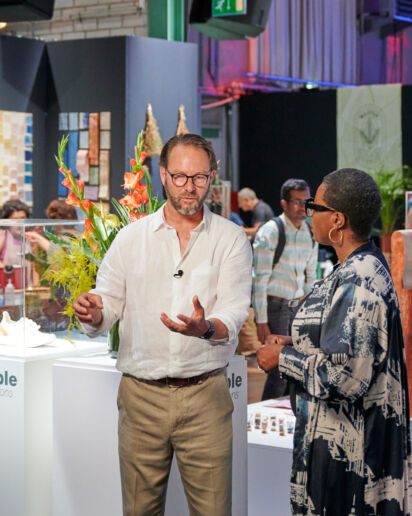
Of course, textiles also lend themselves to in-depth material exploration, analysing intricacies of production and means of (p)rethinking and challenging standards. Think of leather and its unique characteristics – who would have thought something strikingly similar could be crafted from a hemp plant, as illustrated by Lucas Fuhrmann’s “Revoltech”? Or going so far as to almost brutally decontextualize a biomaterial like feathers from their original purpose of insulation, submitting it completely to the functionality of aesthetics, as Suzanne Corcessin has done with “Being Plucked”.
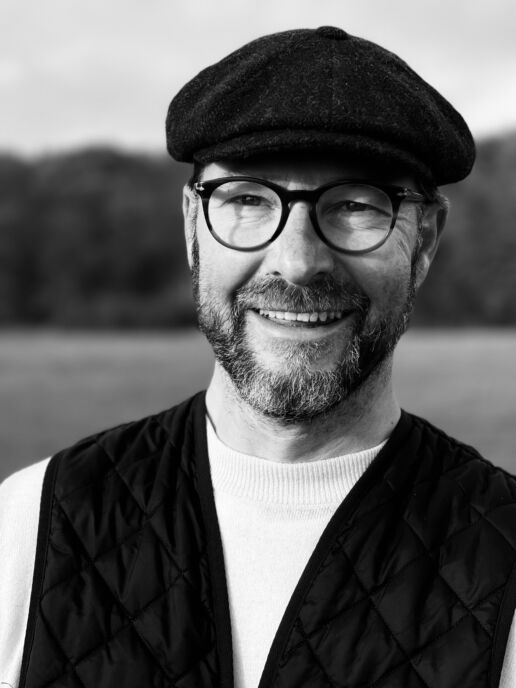
Simon Angel
And still, textiles can be a means of social connection – looking at the emotional component of fabrics, their functionality and the effects they have on others in public and private interaction, reconstructing relationships and the marriage between human and textile. Beautiful testaments of such exploration are the works of Paul Schaffer, whose collection of woven fabrics aims to foster appreciation for the interconnectedness of organisms, Sophie Conroy, who investigates the metaphysical significance of textiles as a connection between the body and the environment, and Elizabeth Balado’s “Blooming Minds: Social Printing”.
Are we leading or following completely different dynamics? Are we at risk of sacrificing artistic intimacy for scientific progress? Are we winning or losing touch? It’s not about being right or wrong, but a question of prism. The Sustainable Innovations Forum proves that it is possible to navigate these different dynamics. Take Cloudwool, for example: with a diverse portfolio and numerous opportunities to work with their product, they have attracted the attention of the likes of Grenson and Balenciaga, effectively demonstrating that it IS possible to unite the different dimensions of soul and science, while successfully positioning their product at the same time.
Feel the difference in dynamics for yourself – come and meet us in the KEYHOUSE and experience the Sustainable Innovations Forum.
Best wishes,
Simon
INFORM & INSPIRE YOURSELF AT THE MUNICH FABRIC START
IN THE SUSTAINABLE INNOVATIONS AREA IN THE KEYHOUSE – H5!
Discover more industry-changing innovations at our upcoming trade fairs:
Trend Preview for AUTUMN.WINTER 24/25
MUNICH FABRIC START Autumn.Winter 24/25 s all about the seasonal leitmotif EACH OTHER. How can we look into the future without losing our minds? Between utter resignation and blind rage lies a hopeful, wise and unbiased perspective. Our future lies in the diversity of such calm, thoughtful and courageous approaches.
EACH OTHER emphasizes the importance of personal connection. We need to continuously stay in touch with each other, be there for one another and listen attentively – even in difficult times. What’s unique about fashion is that we can promote well-being through a variety of tactile and emotional fabrics and styles – not only in sales and use, but also in the field and in production.
Let’s consciously pursue a common and effective goal: to create something beautiful with fashion and make a contribution to our humanity – for EACH OTHER!
WHAT’S NEW?
A multi-purpose black in combination with a light beige and a new anise are the key colours for Autumn.Winter 24/25. Strange colour duos like yellow/ mango, pink/peach or turquoise/blue bring fresh accents to the colour palette. In contrasts, cold and warm tones play with each other, in dark and light nuances, sometimes loud, sometimes quiet and as neutral or bright colors.
Decorative qualities are a recipe against crisis. Protection wear from cozy, lightweight to heavy weight fabrics are key for winter: a firework of creative yarns in volume, lightness, functionality and fancy combinations. Checks come in all variations, be it loud, quiet, big or small. A touch of trash, tech, nostalgie and 80ies brings bling in all variations. Open weaves or knits bring a nuance of winter transparency.
Casual comfort as standard: functional pragmatic classic and timeless styles come as coats, bomber jackets, suits, casual sakkos or padded styles. We play with extremes in width and wrapping volume for morning coat styles, over-shirts, blazers and baggies. Expressive looks are created for night and day with shine through elements rounded off by retro looks from the sixties, seventies and eighties.
These 5 EACH OTHER trends of MUNICH FABRIC START as well as the 10 denim-, street- and sportswear trends for BLUEZONE under the leitmotif CONNEXXION can be found as a comprehensive trend analysis with detailed colour cards, inspiring materials, moods, prints and styles in our TREND BOOK and COLOUR CODE – available in the trend forums in foyer 2 and 4, the trade show office room B 009 and at the Bluezone check-in counter.
each other presents 5 trend worlds for the Autumn.Winter 24/25 season:
HIGHLAND HYBRIDS
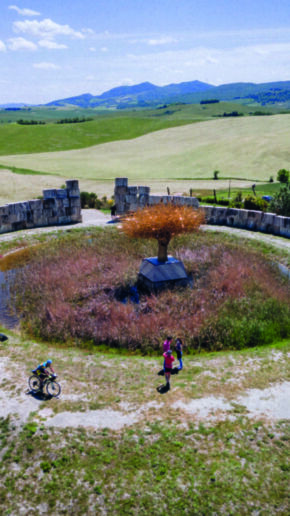
Source:
Matteo Dunchl
MYSTIC BEINGS

Source:
Joao Carvalho on Behance
SYSTEM CRINGE
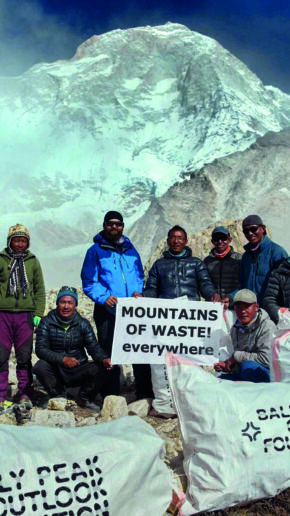
Source:
Edmond Hillary
KINKY CLASSICS
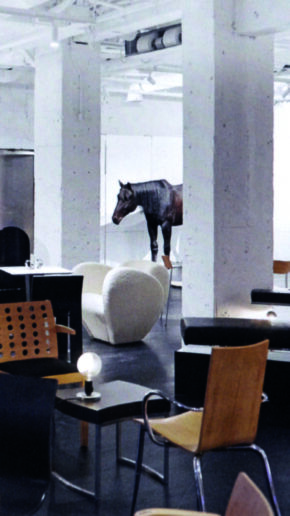
Source:
Gentle Monstre
PAST FORWARD
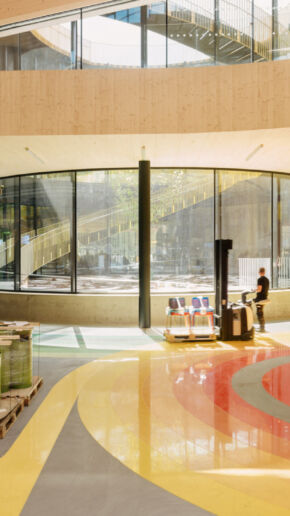
Source:
Joao Carvalho on Behance
DON'T MISS:
INSPIRATION & INFORMATION FOR YOUR COLLECTION DEVELOPMENT - COLOURS, MOODS, SHAPES & STYLES
TREND BOOK
MUNICH FABRIC START & BLUEZONE MOODS AND TRENDS
75 EUR
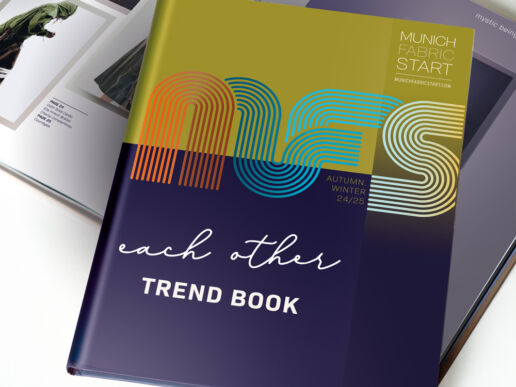
COLOUR CODE
MUNICH FABRIC START & BLUEZONE TRENDFARBEN
120 EUR
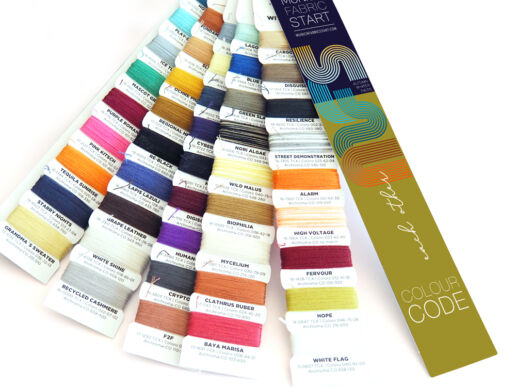
TREND PACKAGE
TREND BOOK AND COLOUR CODE AUTUMN.WINTER 24/25
150 EUR
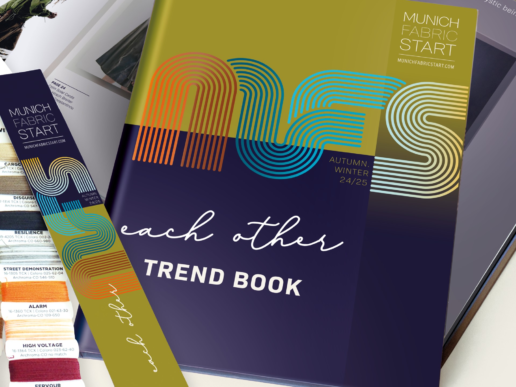
TREND PACKAGE SPRING.SUMMER 24
TREND BOOK & COLOUR CODE
175 EUR
HOW DO WE PACKAGE PEOPLE?
We were so looking forward to the time after the pandemic and now this: war in Europe, bottlenecks in the energy supply and the highest inflation in 71 years. We all feel like we are out of luck and ill-fated. And that for a very long time.
Of course, the world wasn’t any better in former times. But it seems so to us. And because we experience the present as so troubled, we try to return to the light-heartedness we felt in the past. “I have decided to go back to my roots in fashion as well as to the roots of Balenciaga, which is making quality clothes – not making image or buzz,” explains Demna. “Fashion has become a kind of entertainment, but often that part overshadows the essence of it, which lays in the way we create relationships between body and fabric,” state his show notes for Balenciaga.
Yes, in essence that’s it: “body and fabric”. JW Anderson sends these two basic ingredients, from which all fashion is created, down the catwalk before he starts his actual show. A naked body and a fresh roll of fabric – that is the tabula rasa, the blank slate on which fashion can reinvent itself once again. “How do we package people?” asks JW Anderson, as if all that were completely open-ended again.

Carl Tillessen
Summarizing the development, Mark Holgate of Vogue said:
“We’re heading into a reset, where all the din and clamor and sheer noise of fashion today doesn’t matter a jot if the clothes aren’t exceptional in their thought and craft. In other words: focus on design, not creating distraction!”
All this refocusing – on the essence of fashion, on the material as a starting point, on the product itself – is reminiscing. This is what fashion is all about right now: taking people on a journey through time to phases of our lives and theirs when we, and everyone around us, were so much more carefree than we are today.
GET INFORMED & INSPIRED AT MUNICH FABRIC START AT DMI:
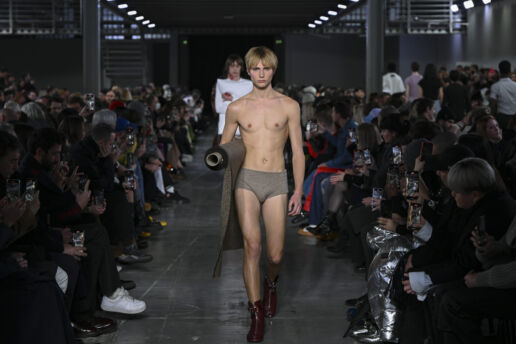
You can find out how you can make this work for you in a personal conversation with the DMI analysts at the DMI Lounge in room K1 in front of hall 1 at MUNICH FABRIC START.
Discover more industry-changing innovations at our upcoming trade shows:
High-tech connection meets low-tech reconnection
Reflecting on the past and looking towards the future – what lies ahead in the sustainable fashion and innovative design industry?
There are two significant factors driving the evolution of the industry at present. Let’s begin with the first topic, which I refer to as the ‘process runway’. On one hand, the term ‘runway’ refers to the well-known fashion runway or catwalk. On the other hand, we can observe the growth of numerous companies and designers with a sustainable focus, who are maturing and becoming more professional, preparing themselves to connect and deliver. From this perspective, it becomes clear that companies and designers understand the need to continuously improve every step of the supply chain, striving for constant enhancement – what I call the process runway.
Could you elaborate on how these labels are improving and changing their production practices?
Certainly. Let’s delve into the example of Knitwear Lab, one of the exhibitors. They demonstrate how one client’s interactions have led to improved production and enhanced quality in several ways. In the past, their manufacturing process began with a rough sketch or digitally drawn idea. Subsequently, one single idea was prototyped multiple times, thus resulting in numerous samples, requiring significant time and numerous adjustments. This process was highly time and material-consuming. To streamline this process, Knitwear Lab embraced digitization. They created a variety of avatars with different size measurements and body types, providing a perfect digital replica for every body shape. With this approach, they can now experiment with more complex designs and experience the implications of different designs and special materials across all sizes, from XXS to XXL without producing supervacaneous samples, thus waste. This is crucial since the details of a finished garment can appear differently on various body sizes. Hence, they first create a digitally perfect fit and high-quality product. Once flawless digitally, it is then manufactured in reality. The benefits are numerous: customization, time and material savings, and cost efficiency – all essential sustainable considerations. Additionally, they can incorporate quality aspects. Cause after all efficient work processes and resource conservation remain significant challenges within the industry.
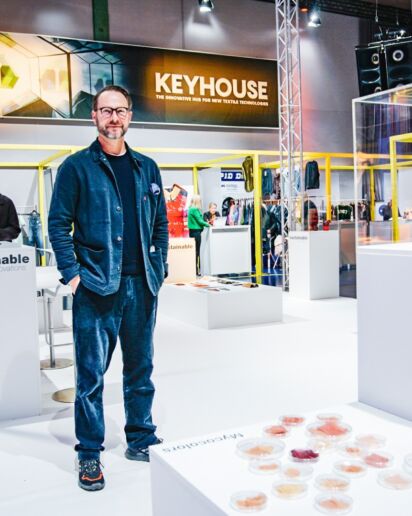
Simon Angel
So, they transitioned from specialized skills to a broader scope?
Exactly. The progression follows this trajectory: initially, we have design studios focusing on their core strengths, on what they excel at. Simultaneously, they are eager to explore avenues for improving the customer journey, sustainability aspects, sourcing or design. It entails broadening their scope of responsibilities and possibilities. Within this transition lies immense potential, but it also presents several challenges. This is the nature of pursuing a goal – people need to collaborate, assume responsibility, and expand their horizons to harness the full potential and become more sustainable and efficient.
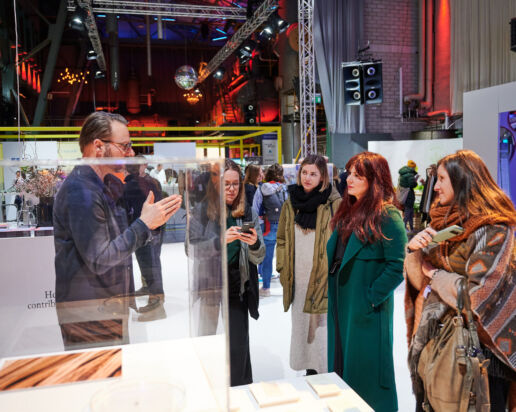
You mentioned another direction at the beginning. Could you elaborate on that?
The other topic revolves around reconnecting with craftsmanship. There is a growing focus on our human nature, on experiencing materials and products through touch, smell, taste… We are redirecting our attention towards engaging our senses. This year, we have exciting projects that facilitate this connection, inspiring people to participate in the knowledge and production processes. To be honest, this craving for tangibility and the opportunity to get hands dirty or experience materials is not limited to the production and design chain alone; it is also a fundamental human need. In the years to come, I am confident that there will be a significant resurgence in reconnecting and rediscovering the purity and authenticity of things.
Are there any synergies, or do these topics merely coexist?
On one hand we have high tech connection using digital advices for improvement and more sustainability, on the other hand low tech reconnection refocusing on craftmanship and human aspects with feeling of the senses. What they do have in common is the very important fact, that without collaboration, nothing would be the same. Studio Sarmite collaborates with Roua Atelier, Crafts Council works with Enschede Textielstad, Meyers & Fügmann cooperate with other designers. If we realize what we and others are doing, we can connect with collaboration and create something even bigger. That is what we experience ourselves at MUNICH FABRIC START: we collaborate a lot as well, for example with BiotexFuture, Berlin Design Farm and Crafts Council. We try to be a partner in acknowledging, introducing and togetherness with other partners to create something bigger in joint forces.
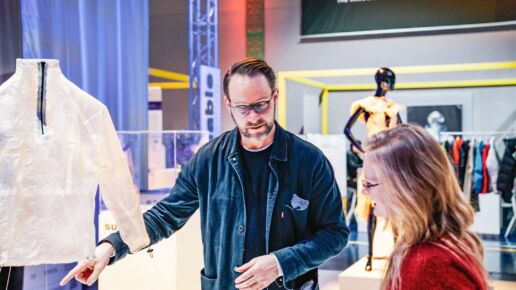
GET INFORMED & INSPIRED AT THE MUNICH FABRIC START
IN THE SUSTAINABLE INNOVATIONS AREA AT KEYHOUSE – H5!
Discover more industry-changing innovations at our upcoming trade shows:
A Vibe Shift is coming
Often, fashion trends are merely new variations on already familiar themes over many seasons. But then at some point there is suddenly a fundamental break, a completely new attitude to life, a completely different basic mood, a “vibe shift”. We are now at such a turning point.
The measures necessary to contain Covid 19 have been so all-encompassing that they have actually robbed us of all joy in life in the meantime. Many of us are left with the feeling that we have lost two years of our lives. This is felt particularly intensely by young people who were irretrievably robbed of part of their precious youth by the pandemic.
Greta Thunberg speaks for her entire generation when she says in retrospect: “We have become more aware that life is short.” The realisation that our time on earth is running out far too quickly is anything but new, but it is particularly topical for us now.
Fashion psychology professor Carolyn Mair also observed during the pandemic how consumers “realise that life is precious, whereas before they might have taken things for granted. They are seizing the moment.”
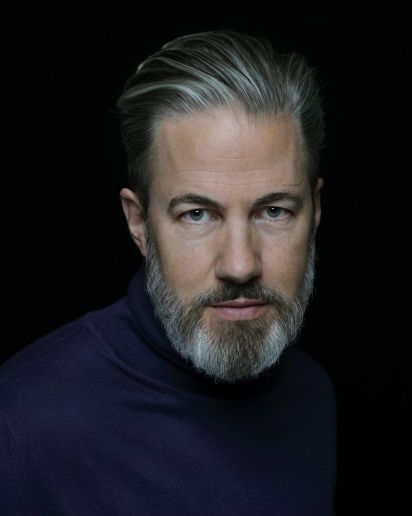
Carl Tillessen
As the 20s take shape, it becomes clear that the Lifestyle of Health and Sustainability, which has dominated the Zeitgeist for the past two decades, has reached its end. Because the L.O.H.A.S. is the opposite of the moment. It is the eternal later. If we chastise ourselves now – so he promises – we will have a healthy body and a healthy environment later. This is and remains true, but through the collective pandemic experience, the fear that we will neglect to enjoy today because of all the thinking about tomorrow has become overwhelming. We crave self-indulgence, need outlets, want to break out, go overboard, want to live as if there is no tomorrow …
GET INFORMED & INSPIRED AT MUNICH FABRIC START AT DMI:
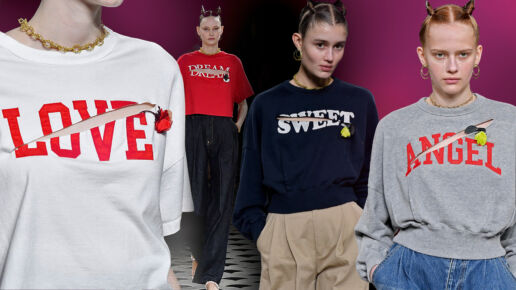
Find out what this means for fashion and what follows the Lifestyle Of Health And Sustainability at MUNICH FABRIC START at the trend presentation of DMI S/S 24
Wednesday, 25 January, at 4:00pm
in Room K1 in front of Hall 1 at MOC.
Discover more industry-changing innovations at our upcoming trade shows:
"How do our actions contribute to the better?"
What is currently happening in the industry of innovators, transformers and forwardthinkers?
Different developments can be observed – especially when it comes to upcoming designers and creators, which is very interesting yet inspiring. Newcomers are about either entering the industry or creating their own one; furthermore, they all developed a very high professionalism in everything they do and how they present their ideas. Storytelling matters, that’s why we see crafts that concern and that communicate about thoughts, materials and backgrounds. They somehow reflect on the state of the industry and/or they question current systems. Just with the eye on possibilities, not to add critique. It is a friendly way to inspire.
You just said creators are “entering the industry or creating their own one”. What do you mean by that?
Well, actually right as I say. Either people and ideas enter an industry OR they create an industry. Entering means that designers or creators just fit into an industry and can get part of it or they can develop their own techniques and make it scalable and somehow create their own. Let me give you an example: WINT Design Lab discovered a new material and also discovered how to use it in order to make it relevant for the market. Either they can enter the industry OR if they find possibilities to cover all the needs within the supply chain and develop the machines to produce in a big scale, they could go big and just create their own industry.

Simon Angel
What other developments can you identify?
Back in the days, let’s say about five years ago, there was mainly one person behind a new idea that was working within a tiny studio. Compared to that, everything is so much more professional: being a material designer, you can have a studio and work with employees who assist. That is nowadays how designers get ready to present their idea to the market. You need people who bridge the gap between the studio and the market. I personally recognize a huge potential in this point of professionalism, because people get ready to connect – young designers now offer representative samples and get in touch with the industry on a very professional level. Newcomers inspire the industry.

What sounds very interesting. What do the newcomers do differently?
Things that impress the industry: crafts that concern and communicate. The designers and their innovations want to tell us stories: it’s about the material, systems (and old behaviours) but also the designs. We can get glimpses into cultural backgrounds, different techniques, social aspects and so much more. For example, the project “Rootful” by Zena Holloway and the project “Choub” by Mehdi Mashayekhi show off how to create a material out of seagrass or wood with the implemented idea to use the finished garment or the designs as tools to communicate.
That’s a positive development, isn’t it?
Yes, it is. But one thing should not be forgotten: we are in the middle of a delicate discussion on the urgency of creating, within that everybody has to
put their own position into a fresh perspective. I sometimes find it important to take a bit of a distance and ask rhetorically questions like: So what? We are
leaving the era of RE-thinking we are entering an era of PRE-thinking. We can challenge ourselves in critical self-reflection with a future smile.
We should not design just to be a designer or cook just for the sake of being a chef. We should not create just to be a creator. We should not just buy new stuff, only for the sake of being a consumer. Way more, we should cook when people need food, design when designs are not good enough and create when the world needs a new product. Let’s stay critical and ask ourselves over and over again: how do our actions contribute to the better?
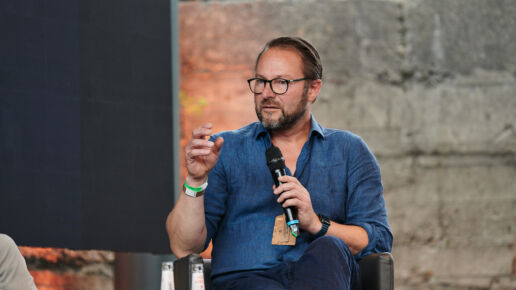
EXPOLRE AND GET INSPIRTED AT MUNICH FABRIC START
IN THE SUSTAINABLE INNOVATIONS AREA AT KEYHOUSE – H5!
Discover more industry-changing innovations at our upcoming trade shows:
The twenties are taking shape
Trend analyst Carl Tillessen not only observes; he anticipates. As a member of the management and chief analyst of the Deutsches Modeinstitut, he knows the textile and fashion to the smallest detail. Here he reveals the upheavals and trend changes that are in store for us.
How can you foresee which trends will develop?
What role does culture play, do current events play?
As part of an association of the most important trend institutions in the world, DMI always sets the key directions for a season two and a half years in advance. To think that far ahead, it is not enough to sell people something as a trend that is already visible in Milan, Paris and New York. You have to recognise trends before they become visible. Let me explain it this way: A bad trend analyst and a good trend analyst go to a bar. They see that the guests are nibbling salty biscuits. The bad trend analyst says: ‘People are eating savoury biscuits. We need savoury biscuits.’ The good trend analyst says, ‘People will get thirsty soon. We need drinks.’
Are people consuming more again right now? If so, why? Does compensation (e.g. for the time lost during the pandemic years) play a role?
Yes and no: No, little is being consumed at the moment. Yes, compensation plays a big role. Before the pandemic, people had increasingly spent money on experiences and less on things. Then the pandemic came and many experiences were not possible or not allowed. So people spent more money on things again. Accordingly, retail sales in the last two years have been much higher than before Corona. Now people are trying to make up in one summer for everything that was cancelled in the last two summers – trips, weddings, festivals, concerts … That costs a lot of money. And this money is missing from the shopping budget.

Carl Tillessen
In view of the very contradictory developments – sustainability and minimalism on the one hand, hedonism and expression through consumption on the other – what forecast would you make for the next few years?
The pandemic has polarised our society in this respect as well. While the majority of people simply wanted their old lives back and to continue exactly where they left off, it became apparent after only a few weeks that the powerful cultural elite took the sitting-at-home-and-cleaning-out-the-closet as an opportunity to rethink their overconsumption and to make a resolution to live more frugally after the pandemic. This idea of consumerism is now in the world, and it is only a matter of time before it becomes mainstream.
What are the challenges and opportunities ahead for the industry?
So far, fashion companies have been able to answer the demand for more sustainability with a more sustainable quality of their products. They replaced cotton with organic cotton, for example, and customers simply bought the same thing in green. But now customers are additionally questioning the quantities. It is less and less about what they want to buy and more about how much they want to buy. Adapting to this new situation is currently the big challenge and opportunity for the industry.
Do your trend analyses differ for the different price segments?
Yes, also. But due to people’s hybrid consumption, this is becoming less and less important. Luxury fashion is increasingly being bought by people who can’t actually afford it, and cheap fashion is also being bought by people who don’t actually need it. In this respect, buying decisions are determined much less by how much someone earns than by what style world they want to live in.
What long-term changes do you see in the next few years?
We are actually just at the end of a macro trend and the beginning of a new one. It’s about more than just a fashion variant. It’s about a new style, a new music direction, a new attitude to life. The twenties are taking shape. But more on that elsewhere.
Get informed & inspired at the MUNICH FABRIC START at DMI:
Get informed & inspired at the MUNICH FABRIC START at DMI:
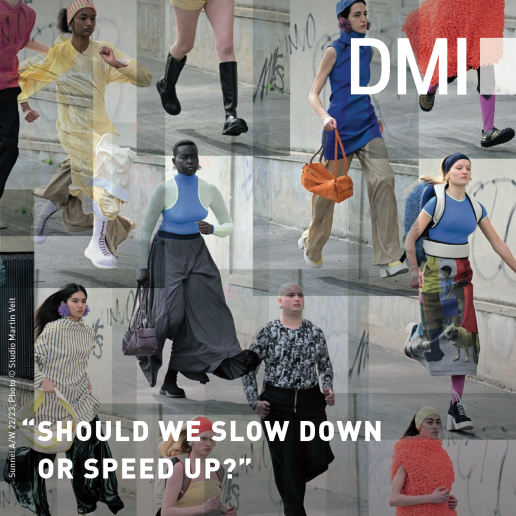
TREND LECTURE: Should we slow down or speed up?
Wednesday, 31 August 2022 from 4:00 – 5:00 pm
in room K1 in front of Hall 1, MOC
TREND BRIEFING:
Ask our analysts in a personal conversation specifically about impulses, colours and materials that are relevant for your products,
your target group and your brand essence.
Tuesday, 30 August from 9:30 am to 6:30 pm
Wednesday, 31 August from 9:30 am to 3:00 pm


